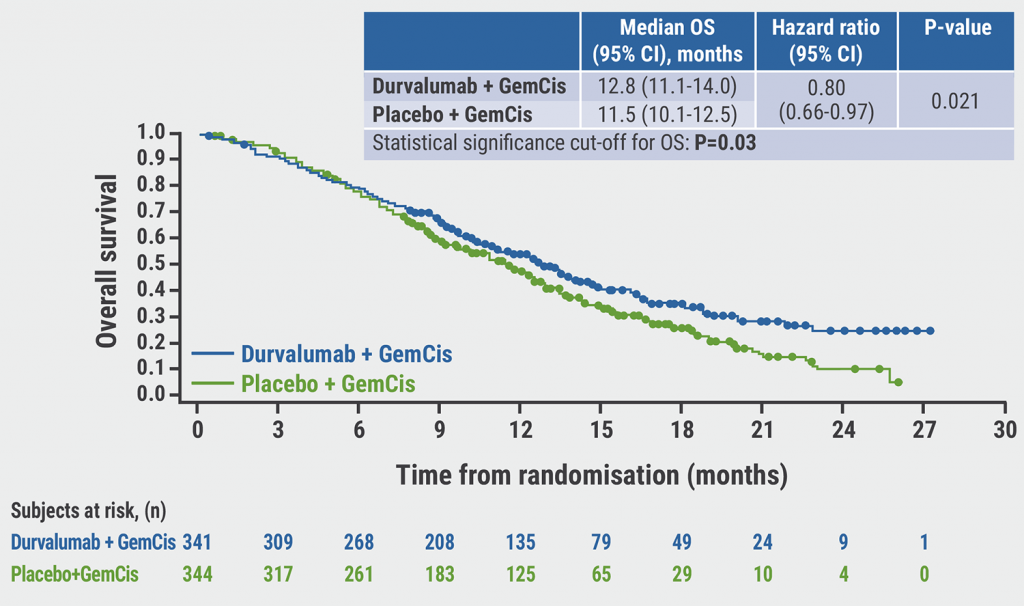https://doi.org/10.55788/9a1c7bd1
“Early Barrett’s oesophagus-associated neoplasia can be curatively treated by endoscopic resection with high success rates, especially if followed by ablation therapy; however, the choice of the resection method is still a matter of debate,” Dr Fadi Younis (University Hospital Hamburg-Eppendorf, Germany) explained [1]. The presented retrospective study investigated the long-term outcomes in patients with Barrett’s oesophagus-associated neoplasia when the choice of treatment with endoscopic mucosal resection (EMR) or ESD was lesion-based. The current guideline of the European Society of Gastrointestinal Endoscopy recommends EMR for visible lesions ≤2 cm with low probability of submucosal invasion and for larger or multifocal benign dysplastic lesions [2]. ESD is suggested in case of suspected submucosal invasion, lesion size >2 cm, and lesions in scarred or fibrotic areas.
The main study outcomes were defined as complete remission or eradication of the neoplasia (CE-N) and intestinal metaplasia (CE-IM) after ESD or EMR. The baseline characteristics showed a total of 364 participants of whom 268 had EMR and 96 ESD. Participants undergoing ESD had a greater extent of disease, more visible lesions, and more difficult interventions. “In the pre-resection and post-resection, we can see that they had 90% of adenocarcinoma in the final histology and they had more difficult interventions,” Dr Younis further specified the post-interventional histology outcomes of the ESD participants. The rate of adenocarcinomas in histology after EMR was 65.3%. Looking at lesion morphology, however, no difference was detected between the groups.
The primary resection treatment of all cancers and high-grade dysplasia's showed success rates of over 96% for initial CE-N in both groups and initial biopsy proven CE-IM in 85.5% (EMR) and 82% (ESD) of cases in the per-protocol analysis. In the intention-to-treat cohort, these percentages were lower with initial CE-N in 78.5% (EMR) and 72.2% (ESD) and CE-IM in 66.7% and 58.6%, respectively. The long-term follow-up revealed CE-N status 2 years after EMR in 92% (per-protocol) and 62% (intention-to-treat) compared with 89% (per-protocol) and 48% (intention-to-treat) in those who received ESD. After 5 years, complete eradication in the per-protocol and intention-to-treat analyses was still present in the EMR group with 85% and 43% versus 75% and 20% after ESD. Looking at the differences by Kaplan-Meier estimates for risk of recurrence, the curves showed a significant difference between the groups: at the point of longest follow-up, 11% of the EMR and 23% of the ESD participants had recurrent neoplasia (P=0.02).
As for adverse events, Dr Younis stated that the overall safety in the 2 groups was similar but participants with ESD had more refractory strictures which required stent insertions and operations.
“Allocation of EMR versus ESD works, but the biology also counts,” Dr Younis expressed in his conclusion.
- Younis F, et al. Clinical stratification for endoscopic submucosal dissection versus endoscopic mucosal resection for Barrett’s associated neoplasia: long-term follow-up. OP211, UEG Week 2022, 8–11 October, Vienna, Austria.
- Pimentel-Nunes P, et al. 2022;54(6):591–622.
Copyright ©2022 Medicom Medical Publishers
Posted on
Previous Article
« Fast recapture of response with ozanimod after withdrawal in UC Next Article
Dupilumab effective in paediatric patients with eosinophilic oesophagitis »
« Fast recapture of response with ozanimod after withdrawal in UC Next Article
Dupilumab effective in paediatric patients with eosinophilic oesophagitis »
Table of Contents: UEGW 2022
Featured articles
IBD in 2022
Fast recapture of response with ozanimod after withdrawal in UC
Ozanimod treatment prompted substantial response after failure of response to induction
Etrasimod shows advantage over placebo in UC
Etrasimod reduces adaptive immune cells in the periphery in UC
Favourable maintenance rates for risankizumab also in delayed responders with CD
IL-23 inhibition reduces inflammatory biomarkers in pre-treated UC
Maintained symptom control with mirikizumab in UC
Mirikizumab successfully resolves active histologic inflammation in UC
Upadacitinib for CD: remarkable efficacy in induction therapy
Sustained maintenance results with upadacitinib in UC
Another chance for TYK2 inhibition in UC
Small molecule obefazimod shows promise in UC
Pivotal results of etrolizumab for CD partly disappointing
Better results for vedolizumab in early CD
Some patients with limited CD may benefit from an early surgical intervention
Dose-interval of adalimumab might be prolonged in CD patients in stable remission
What Is Hot in Upper GI Disorders?
Less ulcer bleeds early after H. pylori eradication in aspirin users
Dupilumab effective in paediatric patients with eosinophilic oesophagitis
Neoplasia in Barrett’s oesophagus: the earlier the intervention, the better the long-term outcome
Hepatology in 2022
Favourable pancreatitis outcomes with procalcitonin-based algorithm to guide antibiotic use
Portal hypertension is associated with poor prognosis in cirrhotic patients
Chances of transplant-free survival in PSC enhanced by colectomy with ileostomy
SARS-CoV-2: Booster doses of key importance for cirrhotic patients
What Is New in Pancreatic Cancer and Pancreatitis?
Fewer long-term interventions after delayed drainage in necrotising pancreatitis
Detection of Europe´s deadliest cancer: much room for improvement
Colorectal Carcinoma: Improving Diagnosis and Therapy
Immunotherapy response may be modulated by microbiome
Computer-aided colonoscopies improved adenoma detection rates
Screening-detected colorectal cancers may have superior surgical outcomes
© 2024 Medicom Medical Publishers. All rights reserved. Terms and Conditions | Privacy Policy
HEAD OFFICE
Laarderhoogtweg 25
1101 EB Amsterdam
The Netherlands
T: +31 85 4012 560
E: publishers@medicom-publishers.com


